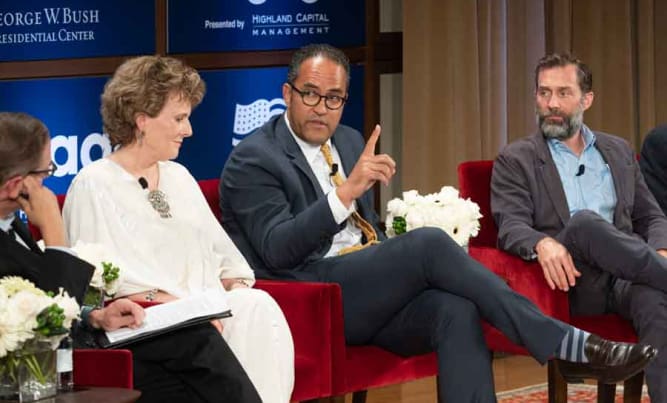Artificial Intelligence and robotics are rapidly evolving industries and technologies, raising the question: “Will robots take my job?” I’ve explored this question for almost a decade. I held the first congressional hearing on artificial intelligence (AI) in 2015. I wrote the U.S. national strategy for AI which Congress passed and President Trump signed into law in 2020. Since being out of government I’ve both advised and served on the boards of companies on the cutting edge of artificial intelligence. I recently wrote a primer on the subject called An Artificial Intelligence Definition for Dummies.
Here is what I have learned from these collective experiences. The technology revolution we’re experiencing will redefine the future of work for the human race. This techtonic shift presents both challenges and opportunities.
We can have an economy where AI and automation don’t lead to significant unemployment. We can build an economy that engages a greater number of people in more meaningful and fulfilling work. This would lead to an improved quality of life for everyone. However, to achieve this vision where AI doesn’t replace human workers around the world, we must act now.
Will A Robot Take My job? – The Impact of Artificial Intelligence on the Job Market and Economy
Artificial intelligence has revolutionized the way we work, transforming industries and changing the face of businesses around the world. Most people recognize the potential of AI, but there is also a significant concern about its impact on job security and the nature of work.
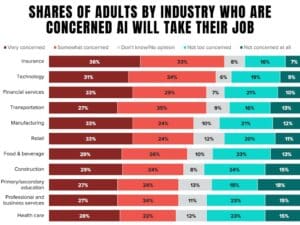
In May 2023, market research analysts from Morning Consult assessed through public opinion polling on artificial intelligence how these trends were being viewed by human workers across several industries.
- Nearly two-thirds (65%) of U.S. adults fear AI may cause job losses, according to the over 13,000+ respondents. Tech and finance workers expressed the most concern. However, opinions on AI creating new jobs for human employees were split, with 37% agreeing and 39% disagreeing.
AI can be a tool that boosts the productivity and efficiency of human workers by eliminating routine tasks and allowing employees to focus on more value-added tasks. It’s only a matter of time before the new tools afforded by AI are ubiquitous through our society like the Internet or smart phones. This reality is fueling the question, “will robots take my job?”
Advancements in technology are enabling machines to become more intelligent and capable of performing complex tasks, which we always thought only the human brain could do. This trend is causing many to ask whether automation, AI, or a combination of both will decrease the amount of jobs requiring a human being or even replace human workers altogether in the near future.
The ultimate question we should be asking ourselves, our leaders, and those who are making this technology is: Can we ensure AI creates new jobs and opportunities, while preventing widespread job losses and economic disruption? Put another way, can we ensure we take advantage of technology before it takes advantage of us?
The Relationship Between Artificial Intelligence and Automation
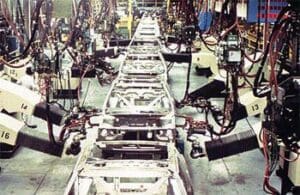
Photo: General Motors installed a Unimate robot arm at its Trenton, New Jersey factory, changing assembly-line work forever.
While both automation and artificial intelligence are capable of reducing human intervention in processes, they differ fundamentally. Automation refers to a system or process that operates based on predefined rules, without the need for human involvement. From industrial robots on assembly lines to computer scripts performing repetitive tasks, automation has been a cornerstone of modern industry.
In contrast, AI seeks to replicate human intelligence and decision-making, performing tasks that typically require human cognition, such as pattern recognition, learning from experience, or natural language understanding. Unlike traditional automation, which follows rigid instructions, AI systems have the capacity to learn and adapt over time through machine learning and have even recently displayed the ability to match human creativity.
Historically, human workers have expressed concerns about both automation and artificial intelligence as they have the potential to automate tasks, improve efficiencies, and consequently reduce the need for human intervention in many job roles.
The Historical Impact of Automation on Human Workers
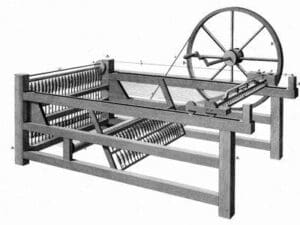
Photo: A drawing of a spinning jenny. James Hargreaves, an English cotton weaver, invented it in 1764. Spinners took raw materials (such as wool, flax, and cotton) and turned them into thread. The original spinning jenny did the work of 8 people. – Encyclopedia Britannica
Automation is not a new concept. It has been around for centuries. One of the first uses of automation in the workforce can be traced back to the Industrial Revolution in the late 18th Century. The invention of machines like the spinning jenny and the power loom (a machine for weaving cloth) automated the process of weaving and spinning, which were previously done manually. This marked the beginning of the shift from manual labor to mechanized work in industries such as textiles.
Spinners became angry about the competition and automation risk to their livelihood, because the invention of the spinning jenny enabled a machine to do the work of eight people. In 1768, a group of spinners broke into Hargreaves’ house and destroyed his machines to prevent them from taking away their work. However, increased production per person eventually led to the drop in prices paid for thread.
If we consider automation in a broader sense, even earlier examples exist. For instance, water wheels and windmills, used for grinding grain or pumping water, were early forms of automation that replaced human or animal labor, and these technologies date back to ancient times. The historical impact of automation on employment brings us to the modern-day question: will robots take my job, just as machines replaced spinners during the Industrial Revolution?
Assembly Lines Led to Jobs Becoming Obsolete
In the context of modern automation, the first industrial robot, Unimate, was installed on a General Motors assembly line in New Jersey in 1959 and began to be mass produced in 1961. It performed tasks that were dangerous for humans, such as handling hot die-cast parts and welding.
The use of automation has allowed for greater efficiency, productivity, and cost savings in many industries. For example, factories have been able to automate their production processes, allowing for faster and more consistent production. However, with the benefits of automation come drawbacks. The increasing use of automation has led to some jobs and even careers becoming obsolete.
As we’ve moved from manual labor to automation, the demand for problem-solving skills has grown, highlighting the need for a workforce adept at adapting to new tools and technologies.
Introducing AI In the Workplace
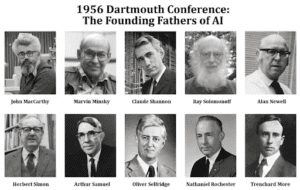
Photo: Founding fathers of AI – scienceabc.com
Just like automation, AI is not a new concept. The term “Artificial Intelligence” was first coined by legendary American computer scientist and cognitive scientist John McCarthy in 1956, and the first working rudimentary AI programs were developed in the 1950s and 1960s.
AI’s integration into the workplace has picked up pace in recent years with developments in the field like reinforcement learning. Having algorithms that can learn from its experiences and make predictions based on patterns it observes, has made AI a valuable asset for many industries.
While some fear that AI may negatively impact employment numbers, it’s also poised to create new job categories and industries.
Pros of AI in the Workplace – Efficiency, Accuracy, and Productivity

Photo: Aurora’s autonomous vehicles, transporting FedEx shipments between Fort Worth and El Paso, signify a new era in freight delivery, with daily and weekly trips increasing in frequency.
One of the biggest advantages of AI in the workplace is its ability to increase efficiency, accuracy, and productivity. AI can perform tasks faster and with greater accuracy than humans, reducing the risk of errors and improving overall performance. This allows businesses to focus on more complex tasks and make better use of their time and resources. AI helping businesses identify patterns and trends in data, enables those businesses to make more informed decisions.
As of early 2023, there are roughly 10 million unfilled jobs in the United States alone. Seven million of those job openings are for essential roles in warehouses, transportation, and retail. Technologies like self-checkout stations are just the beginning of AI’s role in transforming retail services and consumer experiences.
Attrition rates are high in many of these roles. However, there are only about 6 million people available to fill these open positions. Many warehouse suppliers predict they will run out of people to hire by 2024. This labor shortage scenario could be significantly alleviated by harnessing the potential of AI to automate tasks and improve efficiency.
Cons of AI in the Workplace – Job Displacement, Lack of Human Interaction, and Potential Bias

Photo: An American Express Travel Services Office in London, England. According to Bureau of Labor Statistics data, the number of full-time travel agency employees in the U.S. had fallen from a peak of 124,000 in 2000 to 64,000 twelve years later.
While some jobs will be completely automated, others will be transformed, requiring workers to learn new skills and adapt to new roles. This could lead to a skills gap, where there is a shortage of workers with the necessary skills to perform these new roles. Even roles like security guards, traditionally seen as requiring a human presence, are beginning to see the integration of AI and robotics for surveillance and safety tasks.
Another concern is the lack of human interaction that comes with the use of AI. While AI can perform many tasks faster and more accurately than humans, it lacks the emotional intelligence and empathy that is necessary for many jobs. This can lead to a loss of personal touch in customer service and other areas of business.
While AI can perform tasks with incredible efficiency, it lacks the emotional intelligence that human co-workers bring to our workplaces, which is essential for fostering a collaborative and empathetic work environment. Despite AI’s advancements, the interpersonal skills of human employees remain irreplaceable for building relationships and managing teams effectively.
There is also the potential for bias in AI systems, which can lead to discrimination. AI systems are only as good as the data they are trained on, and if that data is biased, the system will be biased as well. This can lead to unfair treatment of individuals or groups and can perpetuate existing inequalities.
Examples of Successful AI Integration in the Workplace

Photo: The 1997 rematch between chess Garry Kasparov and IBM’s computer Deep Blue. It was the first time a current world champion had lost a match to a computer under tournament conditions.
Despite the concerns about AI in the workplace, there are many examples of successful integration. For example, AI is being used in the healthcare industry to analyze medical images and assist with diagnosis. In the financial industry, AI is being used to detect fraud and predict market trends. AI is also being used in manufacturing to automate production lines and improve quality control.
There have been many impactful applications of AI that the public has been using for years. Some examples are:
- Google’s Search Algorithms: Google uses AI and machine learning to improve its search results, providing more accurate and personalized results for users. AI has helped Google’s search engine understand the intent behind users’ search queries and provide more relevant results.
- Self-Driving Cars: Driverless cars are a prime example of AI’s impact on an industry and the future of work. Companies like Waymo and Tesla have been developing self-driving cars using AI. These vehicles use a combination of machine learning, computer vision, and sensor data to navigate roads and traffic.
- Speech Recognition and Personal Assistants: AI is behind the voice recognition capabilities of personal assistant technologies like Apple’s Siri, Amazon’s Alexa, and Google Assistant. These systems use natural language processing (NLP) to understand and respond to human speech.
- Recommendation Systems: AI is used in the recommendation algorithms of platforms like Netflix and Spotify to personalize content for users based on their past behaviors and preferences.
What is Generative AI?
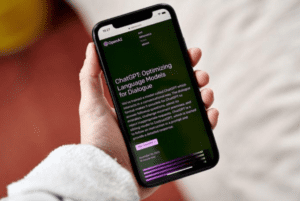
Photo: ChatGPT is part of a fresh wave of generative AI tools – GABBY JONES/BLOOMBERG NEWS
Each of the above mentioned use cases has had a significant impact on the field of AI and demonstrated the technology’s potential for practical, real-world applications. Nevertheless, it was the introduction of large language models (LLMs), like ChatGPT, that brought generative AI to the forefront of our consciousness and reignited the concerns about job displacement previously associated with automation.
Historically automation sparked concerns primarily from blue-collar workers due to the mechanization of manual tasks. Now AI is generating similar worries from white-collar workers, since its capabilities encroach upon the intellectual and administrative tasks traditionally safe from technological displacement.
Generative AI is a subset of artificial intelligence, but it takes things a step further. Instead of just learning to understand and respond to inputs – like a chatbot that answers customer service inquiries – generative AI can create new, original content. This can range from writing an article, composing music, creating a design, to even generating a realistic image from a simple text description.
Deep learning, a subset of AI, is transforming industries by enabling machines to process and learn from large sets of data at an unprecedented scale. With the help of vast amounts of data and complex algorithms, generative AI is not just mimicking or repeating patterns it’s learned, but it’s generating entirely new ideas.
A Blueprint for the Age of Artificial Intelligence
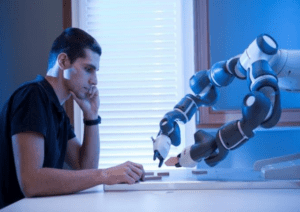
AI may soon be considered our co-workers, working alongside us to tackle complex tasks and streamline operations. The use of AI in the workplace is only going to increase in the coming years. Businesses and workers must prepare for the changes that are coming to our immediate future. We need to take the following strategic actions to ensure that the future of AI and the workforce is not a dystopian one.
Cultivate a Workforce Ready for AI-Driven Economic Growth and Employment Opportunities
The onset of AI is ushering in a new industrial revolution. It has the potential to shape new industries and generate significant economic benefits. The transition, however, presents challenges for workers as AI automates some jobs but also creates new high-tech roles. This shift demands strategic workforce development:
- Skill Development: Cultivate workforce skills that complement AI, such as creativity, problem-solving, and domain expertise, along with hard skills like computer programming, data science, statistics, and machine learning.
- Education Investment: Boost investment in STEM education and incorporate computer science into the standard curriculum in middle school to prepare children for future jobs. Young people are at the forefront of the technology revolution. Therefore, investing in their education is crucial for preparing them for the jobs of the future.
- Vocational Training: Increase funding for vocational and technical training programs that prepare workers for careers in AI and related fields.
To complement AI, we must focus on cultivating problem-solving skills that leverage human creativity and strategic thinking. Additionally, leadership skills will become even more crucial as we navigate the integration of AI in our workplaces, guiding both people and intelligent systems towards common goals.
Secure National Interests through AI
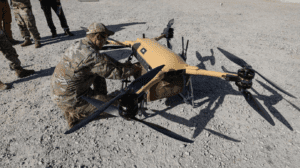
Photo: A TRV-150 unmanned ariel vehicle (UAV) used by the U.S. Army – Raymond Valdez / US Army (April 20, 2023)
AI is not only changing the commercial landscape. It is providing military personnel with advanced tools for defense and strategic operations. AI plays a critical role in national security. As a country we need to stay on the cutting edge of this technology. For every positive use there is for AI there is a nefarious one. We need to be able to defend against bad use cases. Key steps include:
- AI for Defense: Equip our military and intelligence communities with the resources they need to leverage AI.
- Invest in Cybersecurity: The future of cybersecurity will be good AI versus bad AI. We need to prioritize investment in AI-based cybersecurity solutions to address growing security concerns.
Craft Legislation to Enforce Ethical Practices and Regulatory Frameworks

Photo: Will Hurd chairing one of the many hearings about technology in Congress.
AI’s future requires a robust ethical framework and effective regulation. With privacy, bias, and misuse all ongoing issues, AI must be built upon the following ideals:
- Transparency: This means understanding how an AI system makes decisions. It’s key to building trust and preventing misuse.
- Accountability: This is about identifying who’s responsible when AI decisions lead to negative outcomes. It ensures parties involved in creating AI can be held liable for its behavior.
- Non-discrimination: This principle ensures AI systems don’t amplify existing biases. It involves careful data curation and rigorous testing to identify and mitigate biases.
To make these principles the ethical backbone of AI deployment and use, we need to accomplish these essential measures:
- Law Abiding: Confirm that all AI tools abide by the law, with no special exemptions.
- Data Ownership: Codify into law that an individual owns and can control all the data that makes up their digital footprint.
- Licensing Authority: Just like a company needs a license to build a nuclear power plant, powerful AI models over a certain size should need to obtain a license from a regulatory authority.
- IP Clarity: Implement legislation clarifying the importance of intellectual property protection and the necessity for creators to be appropriately compensated when their creations are utilized in AI-generated content. Content owners should receive significant benefit and be duly rewarded for the use of their intellectual property.
To develop, craft and pass legislation to achieve these objectives we need to elect tech-literate officials. We need elected officials who understand these technologies that are going to shape our future.
Assert Global Leadership through Public-Private Partnerships
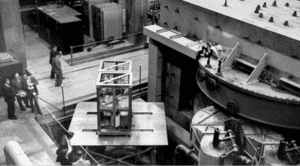
America’s leadership in AI research, development, and ethics is vital in the global landscape. Establishing this foothold requires strategic public-private partnerships:
- Collaborative Innovation: Partner with tech companies, universities, and research institutions to drive AI innovation and address domestic and global challenges.
We Can Balance Human and AI Capabilities in the Workplace
As we navigate the AI era, it’s clear that AI’s role in our workplaces will be crucial. One day soon, work will be a blend of human creativity and AI efficiency. As we ponder the future of work, the question ‘will robots take my job?’ echoes. This question urges us to find a balance between technological advancement and job security.
AI’s integration will redefine roles and create new ones. This will require adaptability and the need to evolve. We must focus on reskilling our workforce for future jobs. By investing in education and training programs we can equip people with skills to make AI work alongside us not the other way around.
A strong ethical framework must guide AI development and deployment. Transparency, accountability, and non-discrimination should be our guiding principles. We need regulations ensuring responsible and ethical AI use.
The future of work is not humans vs. AI, but humans with AI. It’s about using AI as a tool that augments human capabilities, not one that replaces them. It’s about striking the right balance between human creativity and AI efficiency. We can create a workplace that is innovative, productive, and above all else, human.
In the end, AI is just a tool, and like any tool, its impact depends on how we use it. Let’s use it to build, not destroy; to create, not replace; to advance, not regress. Humanity and technology must coexist so we can create a world that is better than today.




















